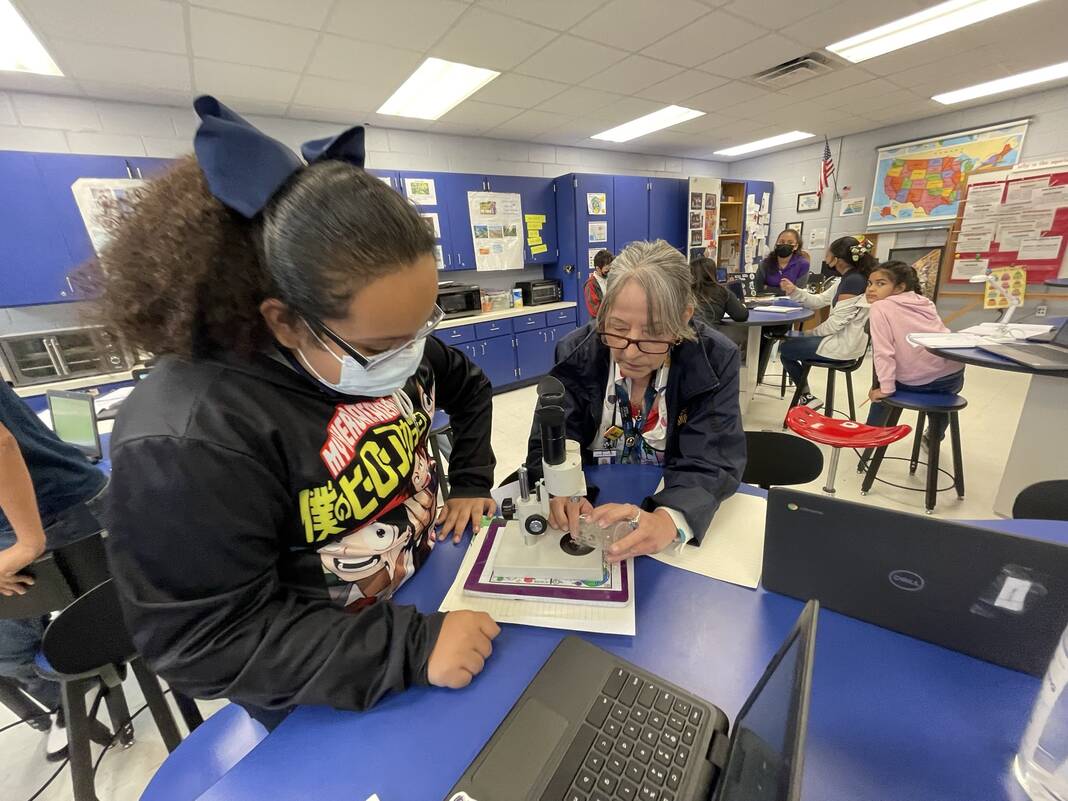Wherever I go, that’s where I take pictures, people, different places, all over the Valley, every wildlife refuge. Name it and claim it. Texas is not safe with me in it. I’m going to take pictures of everything.
SAN BENITO — In one photograph, the bobcat stared cold and cunning at Marie Montalvo as if awaiting the right moment to make its move.
In another, the Rio Grande River shifted, cut and carved its way through harsh cliffs and mountains, declaring once again its power to shape the world.
Most of her photographic journeys serve the purpose of expanding scientific knowledge for her students.
“It helps me understand how weathering breaks down the rock, and erosion moves them,” said Sebastian Prieto, 11, a fifth grader in Montalvo’s science class at La Paloma Elementary School.
Sebastian might not have so thoroughly understood the science of land formation if Montalvo hadn’t taken a picture of the Rio Grande while skydiving.
“I was teaching gravity and it entered my mind that I should do that,” said Montalvo, 68, who takes photographs on foot and in the air to illustrate her lesson plans.
The sky dive above the Rio Grande was last year. Montalvo has no plans to jump from anymore planes, but she’s always on the move with her camera.
“Wherever I go, that’s where I take pictures, people, different places, all over the Valley, every wildlife refuge. Name it and claim it,” she said. “Texas is not safe with me in it. I’m going to take pictures of everything.”
However, as she so eloquently declared, anything and everything is a potential subject for her lens, sometimes with humorous consequences.
“I was taking a picture of some illegals who were crossing over, and I got pulled over by the Border Patrol,” she said. “I certainly got questioned about why am I taking a picture of a drone and immigrants.”
Sometimes, the dark and the tragic reveals itself in her work. One photograph on her desk showed a woman and a small boy in the Rio Grande, with others in the background.
“I went across the border and took pictures where that camp is, where all those immigrants were at,” she said.
And the story with the picture is one of pain and desperation. She saw the agony of the tent city in Matamoros and the fear of the unpredictable. It was frightening and inspiring to see their vulnerability and stoic resolve.
She encountered a different danger in Starr County when she bumped into the bobcat. “It was the middle of the day, and I took off walking,” she said. “I saw a clump of trees. I felt something looking at me.”
She encountered a different danger in Starr County when she bumped into the bobcat.
“It was the middle of the day, and I took off walking,” she said. “I saw a clump of trees. I felt something looking at me.”
She turned and saw the huge cat, who to her delight stayed visible for about eight minutes, long enough for Montalvo to take her photographs.
That bobcat and its intimidating stare grabbed the students’ attention.
“I like it because it shows when it’s about to pounce on its prey,” said Adrielle Pena, 10. “It shows the way it hunts.”
“I like the predators and carnivores,” said Rodney Mora, 12. “I think the predators are cool.”
Now Rodney, Adrielle and the rest of the young scientists in Montalvo’s class pulled out their microscopes and looked at grains of sand, which they understood now to be small rocks, the kind that build mountains, cliffs, valleys and all the bold creations of the world.




